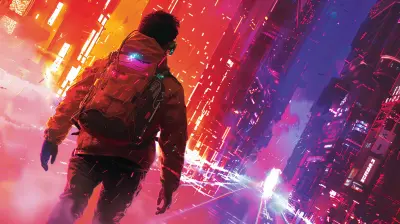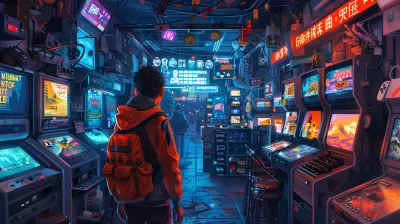FPS Games That Revolutionized Graphics and Visuals
18 July 2025
Ah, first-person shooters. The glorious genre of gaming where we get to live out our wildest action-hero fantasies without actually breaking a sweat or, you know, signing up for boot camp. But FPS games aren’t just about point, aim, and shoot. Oh no, my friend. They’ve also been a massive playground for pushing the boundaries of gaming visuals. Over the years, we've witnessed developers dropping our jaws with graphics so mind-blowing that we’re left questioning reality itself.
So, grab your favorite energy drink, get comfy in that gaming chair of yours, and let’s dive into some FPS games that didn’t just raise the bar for visuals—they chucked the bar into space. 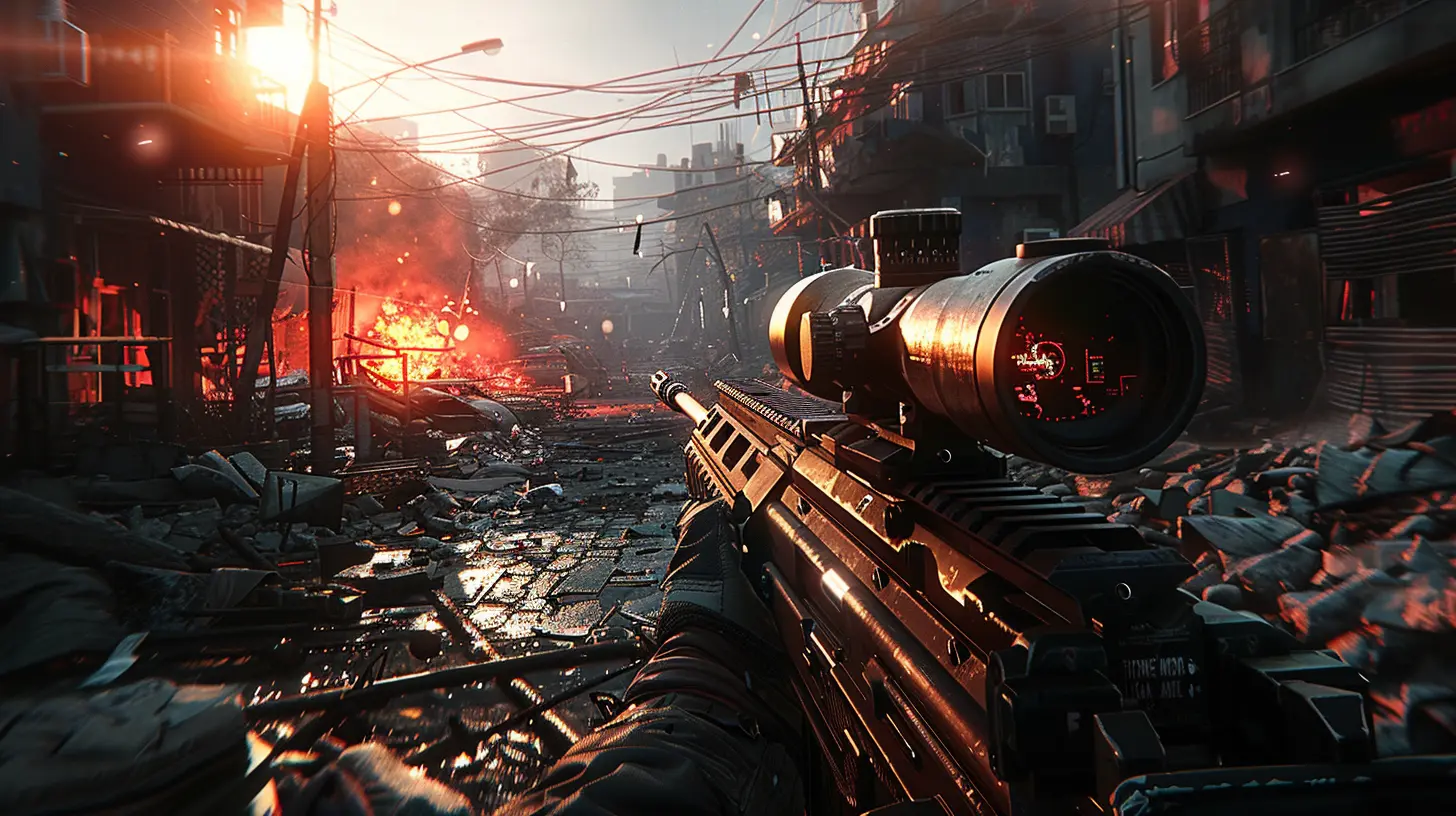
GoldenEye 007 (1997): The OG Jaw-Dropper
Let’s kick things off with an absolute legend. "GoldenEye 007" on the Nintendo 64 might look like a box of pixels glued together by today’s standards, but back in 1997, it was sheer wizardry.Before this gem came along, most FPS games looked… well, clunky. GoldenEye introduced realistic environments (at least by 90s standards), smoother character animations, and, wait for it, facial expressions. Okay, "facial expressions" might be a stretch—those faces looked like someone tried to iron a photo onto a potato. But back then, we were eating it up like it was the last pizza slice at a LAN party. 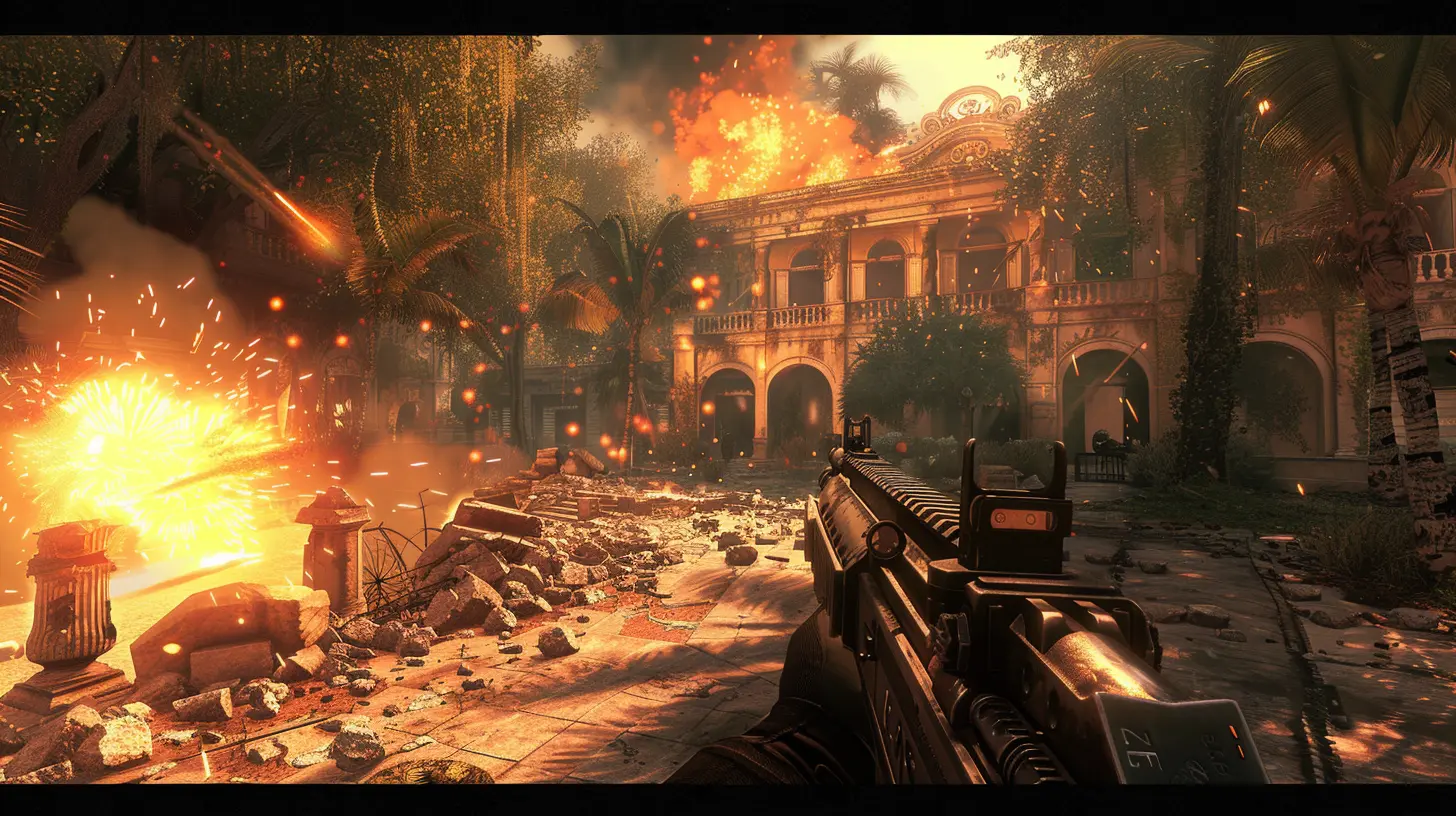
Half-Life (1998): Breaking Brains and Graphics
A year after "GoldenEye," Valve came swinging with "Half-Life." This wasn’t just a game—it was a revolution wrapped up in a crowbar.The graphics? Chef’s kiss. Half-Life’s characters weren’t just faceless cannon fodder; they blinked, moved their mouths (kind of), and gave you this unsettling feeling like, "Wait, are these… real people?” The environments were meticulously detailed, making Black Mesa feel like a place you could actually call home (if you’re okay with alien invasions and questionable coworkers).
The game’s lighting was a big deal too. Dynamic lighting and shadows? Oh yeah, Half-Life said, “Let there be light!” and gamers felt truly immersed, as if they were Gordon Freeman themselves. 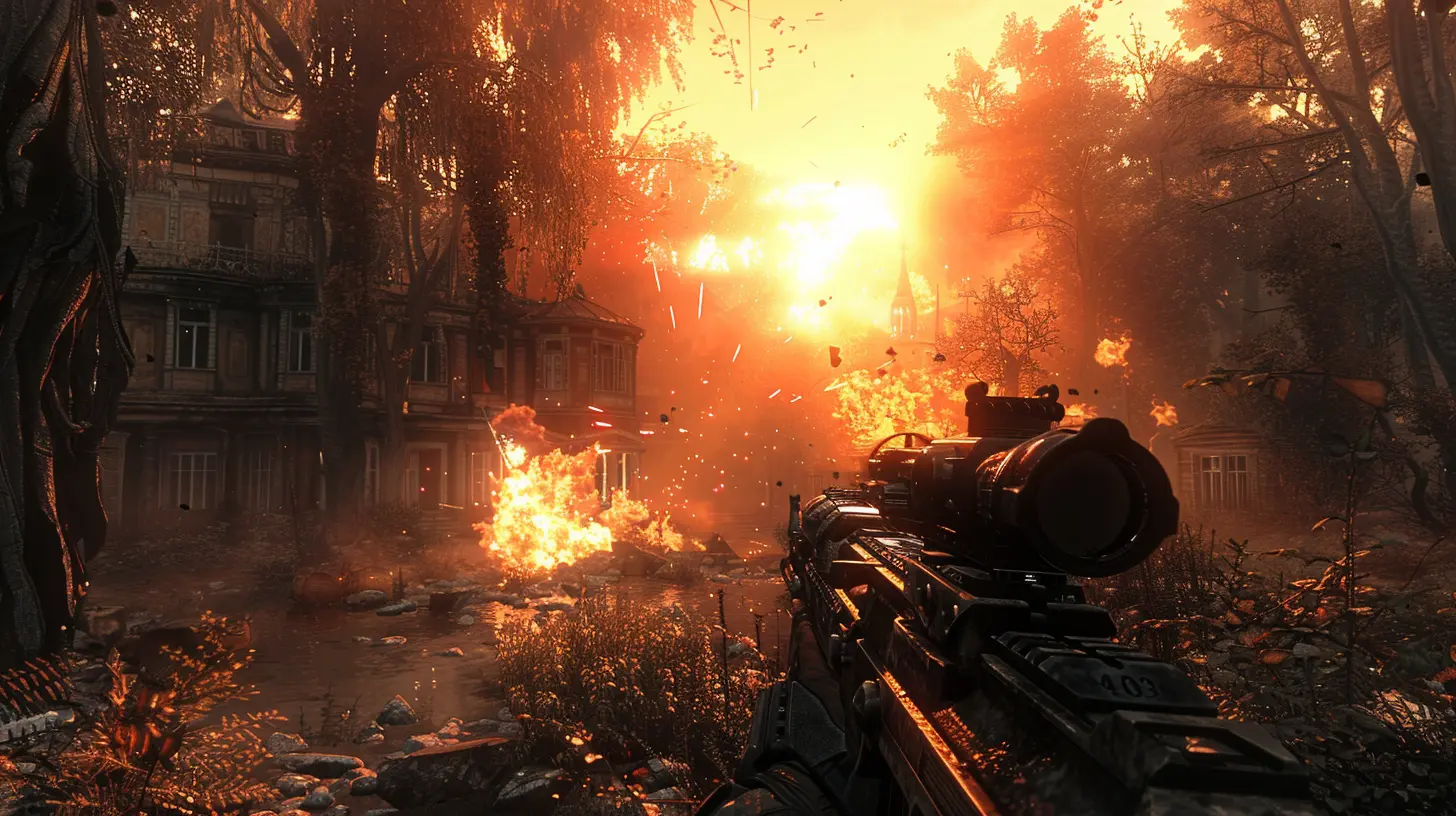
Doom 3 (2004): When Darkness Became a Feature
Alright, who remembers cranking up the brightness on their monitor just to avoid having a heart attack while playing "Doom 3"? This game didn’t just use darkness—it weaponized it.Doom 3 blew everyone’s minds with its next-level lighting and shadow effects. Every flickering light bulb and sinister shadow felt like they were put there specifically to mess with you. The textures? Crisp as heck. Monsters looked grotesquely detailed (gross in a good way, of course). It was one of the first FPS games where you found yourself staring at walls and thinking, "Wow, that’s a really good-looking wall.”
Sure, the gameplay was terrifying, but the visuals were what really yanked us into the depths of Hell… and we loved every freaking second of it. 
Crysis (2007): Can It Run Crysis?
If we’re talking about games that set benchmarks for graphics, then of course we have to talk about "Crysis." It’s the game that single-handedly terrorized PC gamers by making their rigs burst into flames.When "Crysis" launched, it felt like Crytek was saying, “Hey, you liked good graphics before? Here’s a visual nuke for you!” The lush jungles, insanely realistic water effects, and hyper-detailed character models made everyone’s eyeballs dance with joy.
This game didn’t just revolutionize FPS visuals—it was the yardstick by which every gaming PC was measured for over a decade. And let’s be honest: even today, some poor souls still boot it up to test their new graphics cards.
Battlefield 3 (2011): War Never Looked This Good
When Battlefield 3 dropped, it was like EA DICE said, “Oh, you think war is ugly? Hold my Battlefield Premium membership.”This game wasn’t just a war shooter; it was a cinematic experience wrapped in a bulletproof vest. Thanks to the Frostbite 2 engine, the visuals were absolutely insane. Explosions had this Hollywood-level pizzazz, environments were destructible (YES!), and the lighting effects? They made you feel like you were in the middle of a warzone, squinting through sunlight and dodging debris.
Even the animations felt alive—they didn’t just die; they went down with Oscar-worthy drama. I mean, if graphics could win awards, Battlefield 3 would’ve been the Leonardo DiCaprio of video games.
Bioshock Infinite (2013): Artistic Eye Candy
Now, let’s get a little artsy with "Bioshock Infinite." Where most FPS games went for gritty realism, Bioshock Infinite looked at that trend and said, “Nah, let’s make a freaking masterpiece.”Instead of dark corridors and dystopian wastelands, Infinite gave us Columbia—a floating city in the sky that was as vibrant as a Van Gogh painting. The combination of steampunk aesthetics, neon signs, and intricate architecture made this game feel like stepping into an interactive art exhibit.
And let’s not forget about the characters. Elizabeth wasn’t just a sidekick—she was a living, breathing (well, almost) companion who made you genuinely care about her. The animations, the facial expressions, the attention to detail—all of it was just… chef’s kiss.
Call of Duty: Modern Warfare (2019): Realism Overload
The 2019 reboot of "Modern Warfare" wasn’t just another Call of Duty game—it was a whole new level of realism. Infinity Ward brought the big guns (pun fully intended) with its revamped engine.The environments felt so authentic that you could almost smell the burning rubble (though, thankfully, they didn’t invent Smell-O-Vision for this one). The lighting and shadows were ridiculously on-point, creating an atmosphere that felt eerily close to real life. And let’s not even talk about the character models—there were moments when you’d squint at the screen and think, “Wait, is that an actor or an NPC?”
Everything in Modern Warfare was about immersion, and boy, did it deliver.
Cyberpunk 2077 (2020): Okay, It’s Not FPS-Exclusive, But We Need to Talk
Alright, hear me out before you grab the pitchforks. Yes, "Cyberpunk 2077" isn’t just an FPS, but it deserves a spot on this list for its graphics alone. When it wasn’t busy glitching your character into a T-pose, Night City was drop-dead gorgeous.Ray tracing took center stage, making neon lights shimmer like they were pulled straight from a sci-fi fever dream. The reflective surfaces, the rain-soaked streets, and the cyberpunk aesthetic all combined into a visual spectacle that had you muttering, “Dang, this is pretty,” even while your GPU cried for mercy.
Sure, its launch was rougher than a rollercoaster with no brakes, but the visuals? Absolutely next-gen.
Halo Infinite (2021): Master Chief’s Glow-Up
Last but definitely not least: "Halo Infinite." This game was like the comeback story we didn’t know we needed. After some early graphics-related backlash (yes, we all remember Craig the Brute), 343 Industries pulled a reverse Uno card and polished it to perfection.The result? Stellar visuals that struck the perfect balance between nostalgic Halo vibes and cutting-edge graphics. The open-world design was lush and vibrant, the lighting effects popped, and the attention to detail (like reflections in Master Chief’s visor) was just chef’s kiss.
It felt like a love letter to Halo fans, wrapped in a shiny, beautiful package that screamed, “This is what next-gen gaming looks like.”
Honorable Mentions
Okay, I know what you’re thinking—there are so many other visually stunning FPS games out there, right? So, let’s pour one out for the likes of Far Cry 3, Metro Exodus, and Titanfall 2. Each of these games, in their own way, pushed the envelope for graphics and left us gawking at our monitors like kids staring through a candy shop window.Final Thoughts
FPS games have come a long, long way from pixelated corridors and blocky enemies. They’ve evolved into full-blown visual feasts that blur the line between games and movies. From the foggy jungles of "Crysis" to the vibrant skies of "Bioshock Infinite," these games have redefined what we expect from visuals—and, let’s be honest, made all of us a little more obsessed with upgrading our hardware.So, the next time you’re fragging your buddies online or creeping through a dimly lit corridor, take a moment to appreciate the artistry behind the game. Because let’s face it—without these groundbreaking FPS titles, our gaming lives would probably still be stuck in the pixelated Stone Age.
all images in this post were generated using AI tools
Category:
First Person ShooterAuthor:

Kaitlyn Pace
Discussion
rate this article
1 comments
Valencia Wheeler
Truly groundbreaking visuals, great insights!
August 6, 2025 at 3:09 AM

Kaitlyn Pace
Thank you! I'm glad you found the visuals and insights compelling!

